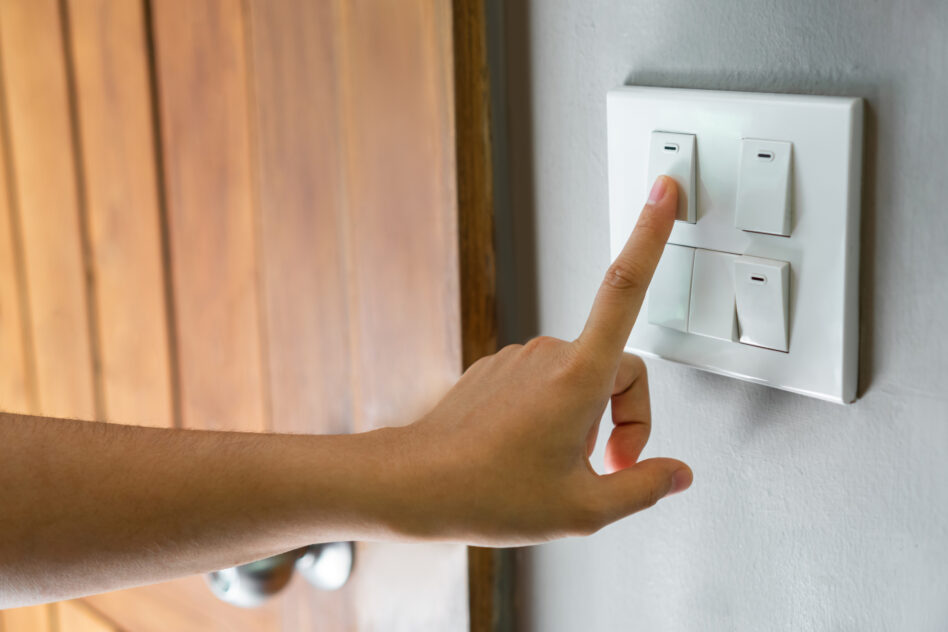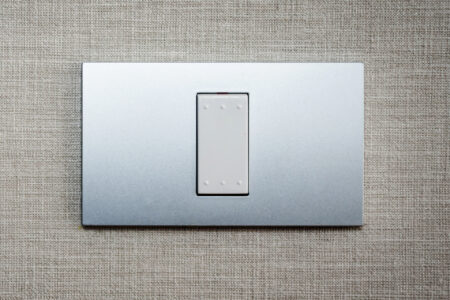You may not realize this, but switches are the most commonly used devices in our daily lives. A switch is responsible for turning an electric appliance on or off by joining or breaking a circuit. Today, we’re talking about the differences between 1-way and 2-way switches.
1 Way vs 2 Way Switch Definition
To properly kick off our 1-way vs 2-way switch comparison, we’ll first discuss the definitions of the two types of switches.
So, what’s a 1-way switch?
A 1-way switch is a type of switch that allows the flow of current in only one direction. This means that it doesn’t conduct electricity back and forth.
A 1-way switch features two terminals that it uses to close or open a circuit.
When a 1-way switch is turned on, the circuit is closed as the two terminals are now connected. This results in the successful conduction of electricity, prompting the electrical device to work.
When a 1-way switch is turned off, the circuit is open as the two terminals are now disconnected. This results in no flow of electricity, preventing the electrical device from working.
A single-pole switch is another name for a 1-way switch.
Then, what’s a 2-way switch?
A 2-way switch is a type of switch that allows the flow of current across two lines; in either direction. It’s designed to control a single appliance from two different locations (one switch is installed at each location).
A 2-way switch features three terminals that it uses to close or open a circuit.
A 2-way switch is turned on when two of the three terminals are connected while one terminal remains disconnected, closing the circuit.
This results in a successful flow of current so the electrical device operates. In other words, for a 2-way switch to work, the three terminals can’t be connected together at the same time.
A double-pole switch is another name for a 2-way switch. And to make it a little more complicated 🙂 there are also 2-way switches with an included dimmer.
How It Works
For an electrical appliance with a 1-way switch to work, the circuit must be closed. This happens when the two terminals inside the switch’s circuit connect once you flick the switch from the outside.
With the circuit now free of interruption, there’s a flow of current that causes the appliance to operate.
As for an electrical appliance with a 2-way switch, it’ll also work when the circuit is closed. However, not all terminals must be connected.
Only two out of the three terminals need to be connected while one has a broken connection.
Since a 2-way switch control system involves two switches, the appliance is turned on (or the circuit is closed) when two of either three terminals are connected.
Think of a single 2-way switch as a pair of 1-way switches fitted into one unit.
Number of Terminals or Contacts
Also known as contacts, the number of terminals in 1-way vs 2-way switches is one of the most significant differences between them.
A 1-way switch makes or breaks a circuit using only two terminals. On the other hand, a 2-way switch has three terminals where only two must be connected to make a circuit.
Access
If you install a 1-way switch, you can access it from only a single location.
This means that controlling a 1-way switch to turn an electrical appliance on or off is possible from just one spot.
For example, if you already have a 1-way switch installed by a room’s door to control a ceiling fan, you can’t mount another 1-way switch to control the same fan at the other end of the room.
On the other hand, if you install a 2-way switch, you can access it from two separate locations.
This means that you can control a 2-way switch to turn an electrical appliance on or off from different spots. As such, 2-way switches are more convenient.
For example, if you already have a 2-way switch installed by a room’s door to control a lighting fixture, you can mount another 2-way switch to control the same lighting fixture at the other end of the room.
On and Off Position
Due to the simplicity of its circuit, a 1-way switch features a specific on and off position.
This means that one flick in a certain direction is definitely ‘ON’ and another flick in the opposite direction is definitely ‘OFF’.
However, the more complex 2-way switch doesn’t have a specific on and off position.
It depends on the orientation of the switch at the time of use, so a flick in either direction can be ‘ON’ or ‘OFF’ based on the function of the previous flick.
Applications
Using a 1-way switch is reserved for applications where you need to control an electrical appliance from a single location only.
As such, 1-way switches are typically installed in houses and workplaces to control devices like light fixtures, fans, air conditioners, coolers, heaters, and so on.
On the other hand, using a 2-way switch is reserved for applications where you need to control an electrical appliance from two separate locations.
As such, it’s more of a specialty type of switch that’s not as common as 1-way switches.
2-way switches are usually installed for controlling lights in long corridor wiring or staircase wiring.
Installation
The installation process of a 1-way switch is easy thanks to its simple design. It doesn’t cost much time or effort. However, the installation process of a 2-way switch is more difficult due to its more complex design.
In both cases we highly recommend you hire an electrician to do the installation work.
Cost
As far as the price goes, the simplicity and restrictions of 1-way switches make them a cheaper option compared to the more complex but convenient 2-way switches.
But when considering the cost of hiring an electrician in the end there will be not a big difference in overall installation costs.






